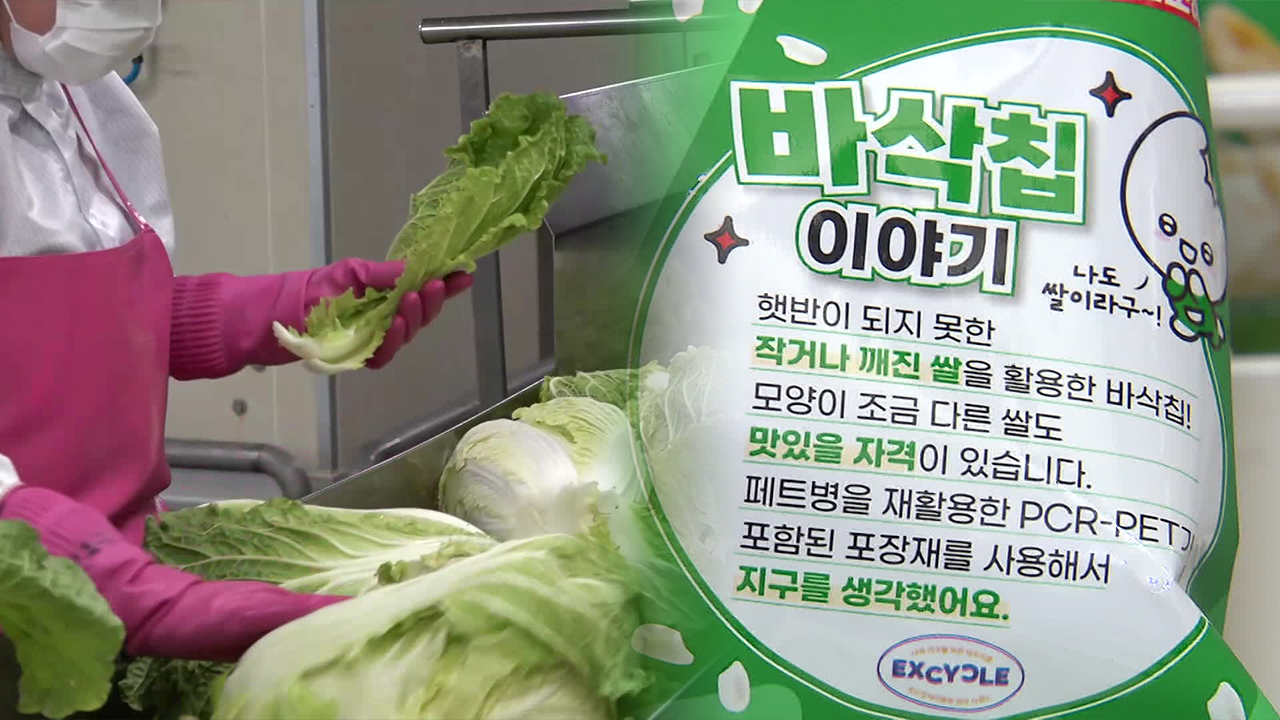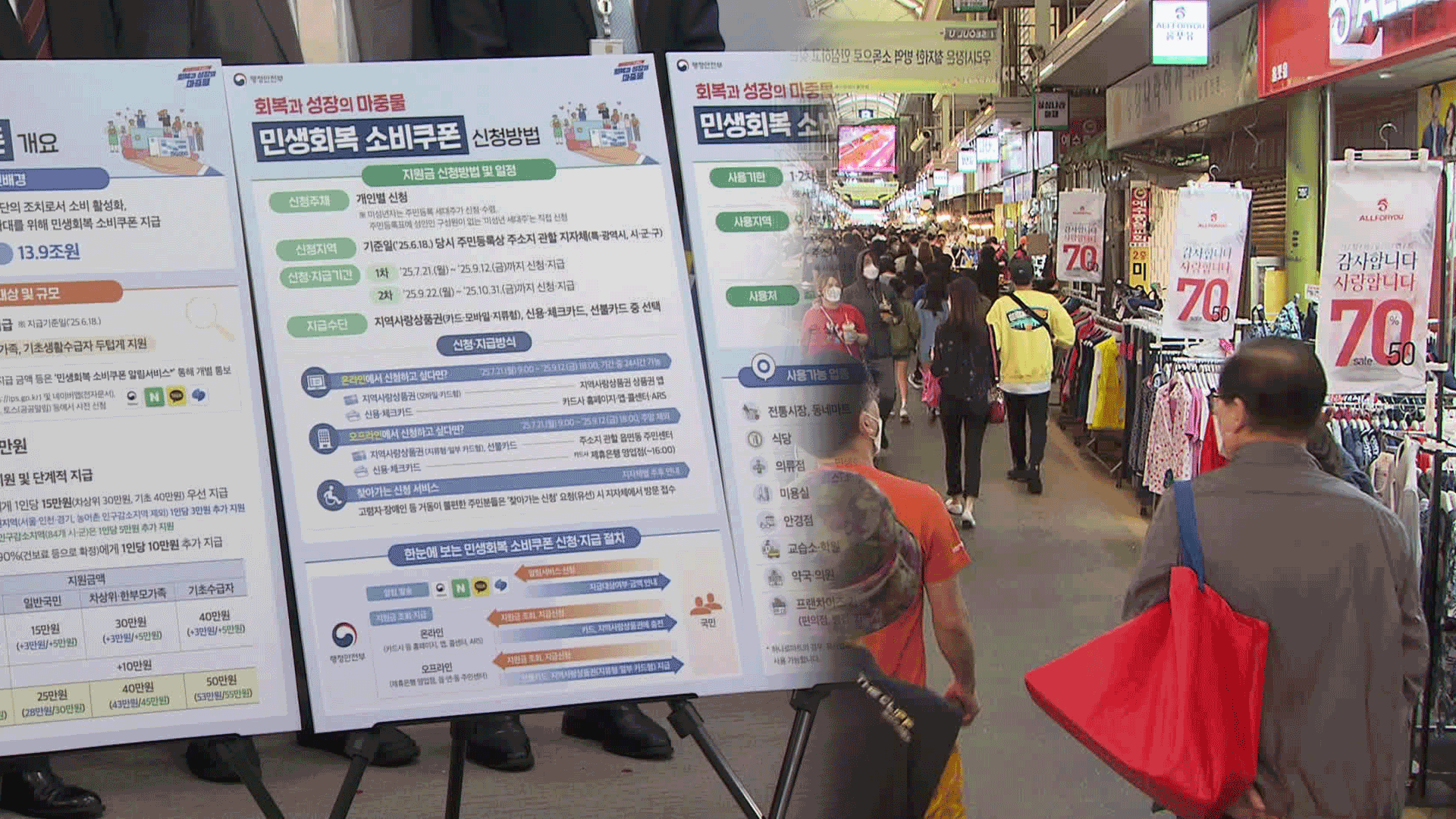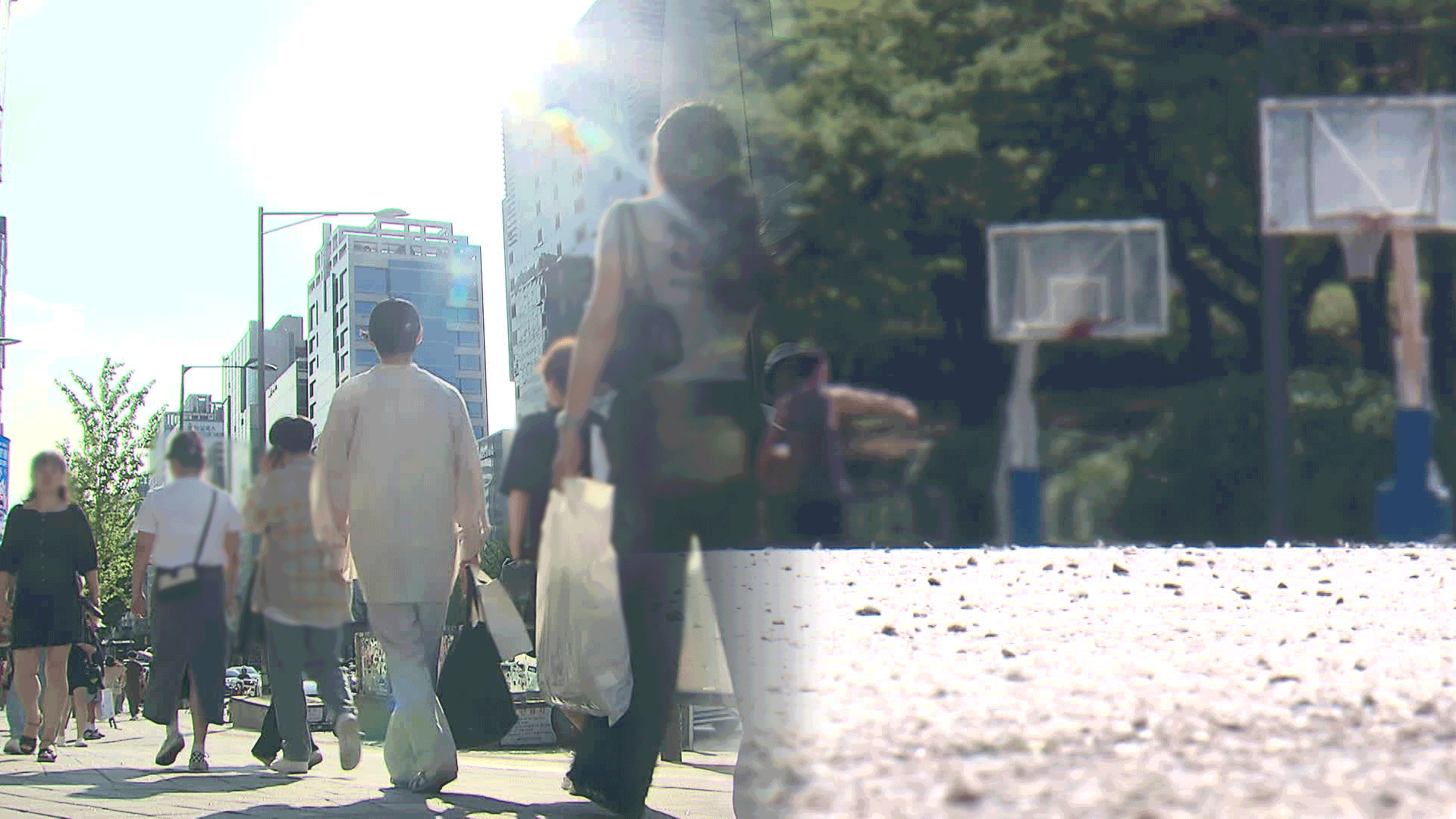Food upcycling turns waste into value-added products
입력 2024.12.25 (23:25)
읽어주기 기능은 크롬기반의
브라우저에서만 사용하실 수 있습니다.
[Anchor]
Leftover or discarded ingredients after processing food are being transformed into new products.
With the aim of reusing food, this initiative is eco-friendly and creates added value, drawing attention from the food industry.
Reporter Park Min-cheol has the story.
[Report]
Workers at a kimchi factory are carefully separating the outer leaves of napa cabbage from the conveyor belt.
After washing the selected outer leaves, a secondary sorting process is conducted.
This process utilizes parts that are generally considered leftover materials when making napa cabbage kimchi to create packaged kimchi products.
The unique texture and unfamiliar taste of the outer leaves are complemented with customized seasoning, and the product was officially launched in May of this year.
Since then, word of mouth has led to an increase in sales by more than eight times within four months of its release.
As a result, about half of the napa cabbage outer leaves that were previously unused in the kimchi processing have now been reborn as high-value products.
At this year's international food exhibition held in Paris, it won an innovation award.
[Oh Ji-young/Head of Food Research at OURHOME: "From the perspective of 'food upcycling,' we received the grand prize in the convenience food sector due to the resource circulation aspect, uniqueness, and nutritional excellence."]
This food company has focused on rice that was broken or unevenly shaped during the instant rice manufacturing process, which was often overlooked.
Although it lacked marketability for instant rice, the company recognized its quality and nutritional value and decided to use it to make rice snacks.
As a result, about 40% of the broken rice has become a key ingredient for a successful product.
[Lee Ji-sun/CJ CheilJedang Researcher: "Because it was broken and small, it was difficult to use in instant rice. Through the concept of 'food upcycling,' we turned it into a food ingredient..."]
The global market size for 'food upcycling,' which refers to the new utilization of food, is expected to grow from 70 trillion won in 2022 to 110 trillion won by 2032.
This is KBS News, Park Min-cheol.
Leftover or discarded ingredients after processing food are being transformed into new products.
With the aim of reusing food, this initiative is eco-friendly and creates added value, drawing attention from the food industry.
Reporter Park Min-cheol has the story.
[Report]
Workers at a kimchi factory are carefully separating the outer leaves of napa cabbage from the conveyor belt.
After washing the selected outer leaves, a secondary sorting process is conducted.
This process utilizes parts that are generally considered leftover materials when making napa cabbage kimchi to create packaged kimchi products.
The unique texture and unfamiliar taste of the outer leaves are complemented with customized seasoning, and the product was officially launched in May of this year.
Since then, word of mouth has led to an increase in sales by more than eight times within four months of its release.
As a result, about half of the napa cabbage outer leaves that were previously unused in the kimchi processing have now been reborn as high-value products.
At this year's international food exhibition held in Paris, it won an innovation award.
[Oh Ji-young/Head of Food Research at OURHOME: "From the perspective of 'food upcycling,' we received the grand prize in the convenience food sector due to the resource circulation aspect, uniqueness, and nutritional excellence."]
This food company has focused on rice that was broken or unevenly shaped during the instant rice manufacturing process, which was often overlooked.
Although it lacked marketability for instant rice, the company recognized its quality and nutritional value and decided to use it to make rice snacks.
As a result, about 40% of the broken rice has become a key ingredient for a successful product.
[Lee Ji-sun/CJ CheilJedang Researcher: "Because it was broken and small, it was difficult to use in instant rice. Through the concept of 'food upcycling,' we turned it into a food ingredient..."]
The global market size for 'food upcycling,' which refers to the new utilization of food, is expected to grow from 70 trillion won in 2022 to 110 trillion won by 2032.
This is KBS News, Park Min-cheol.
■ 제보하기
▷ 카카오톡 : 'KBS제보' 검색, 채널 추가
▷ 전화 : 02-781-1234, 4444
▷ 이메일 : kbs1234@kbs.co.kr
▷ 유튜브, 네이버, 카카오에서도 KBS뉴스를 구독해주세요!
- Food upcycling turns waste into value-added products
-
- 입력 2024-12-25 23:25:18

[Anchor]
Leftover or discarded ingredients after processing food are being transformed into new products.
With the aim of reusing food, this initiative is eco-friendly and creates added value, drawing attention from the food industry.
Reporter Park Min-cheol has the story.
[Report]
Workers at a kimchi factory are carefully separating the outer leaves of napa cabbage from the conveyor belt.
After washing the selected outer leaves, a secondary sorting process is conducted.
This process utilizes parts that are generally considered leftover materials when making napa cabbage kimchi to create packaged kimchi products.
The unique texture and unfamiliar taste of the outer leaves are complemented with customized seasoning, and the product was officially launched in May of this year.
Since then, word of mouth has led to an increase in sales by more than eight times within four months of its release.
As a result, about half of the napa cabbage outer leaves that were previously unused in the kimchi processing have now been reborn as high-value products.
At this year's international food exhibition held in Paris, it won an innovation award.
[Oh Ji-young/Head of Food Research at OURHOME: "From the perspective of 'food upcycling,' we received the grand prize in the convenience food sector due to the resource circulation aspect, uniqueness, and nutritional excellence."]
This food company has focused on rice that was broken or unevenly shaped during the instant rice manufacturing process, which was often overlooked.
Although it lacked marketability for instant rice, the company recognized its quality and nutritional value and decided to use it to make rice snacks.
As a result, about 40% of the broken rice has become a key ingredient for a successful product.
[Lee Ji-sun/CJ CheilJedang Researcher: "Because it was broken and small, it was difficult to use in instant rice. Through the concept of 'food upcycling,' we turned it into a food ingredient..."]
The global market size for 'food upcycling,' which refers to the new utilization of food, is expected to grow from 70 trillion won in 2022 to 110 trillion won by 2032.
This is KBS News, Park Min-cheol.
Leftover or discarded ingredients after processing food are being transformed into new products.
With the aim of reusing food, this initiative is eco-friendly and creates added value, drawing attention from the food industry.
Reporter Park Min-cheol has the story.
[Report]
Workers at a kimchi factory are carefully separating the outer leaves of napa cabbage from the conveyor belt.
After washing the selected outer leaves, a secondary sorting process is conducted.
This process utilizes parts that are generally considered leftover materials when making napa cabbage kimchi to create packaged kimchi products.
The unique texture and unfamiliar taste of the outer leaves are complemented with customized seasoning, and the product was officially launched in May of this year.
Since then, word of mouth has led to an increase in sales by more than eight times within four months of its release.
As a result, about half of the napa cabbage outer leaves that were previously unused in the kimchi processing have now been reborn as high-value products.
At this year's international food exhibition held in Paris, it won an innovation award.
[Oh Ji-young/Head of Food Research at OURHOME: "From the perspective of 'food upcycling,' we received the grand prize in the convenience food sector due to the resource circulation aspect, uniqueness, and nutritional excellence."]
This food company has focused on rice that was broken or unevenly shaped during the instant rice manufacturing process, which was often overlooked.
Although it lacked marketability for instant rice, the company recognized its quality and nutritional value and decided to use it to make rice snacks.
As a result, about 40% of the broken rice has become a key ingredient for a successful product.
[Lee Ji-sun/CJ CheilJedang Researcher: "Because it was broken and small, it was difficult to use in instant rice. Through the concept of 'food upcycling,' we turned it into a food ingredient..."]
The global market size for 'food upcycling,' which refers to the new utilization of food, is expected to grow from 70 trillion won in 2022 to 110 trillion won by 2032.
This is KBS News, Park Min-cheol.
-
-

박민철 기자 mcpark@kbs.co.kr
박민철 기자의 기사 모음
-
이 기사가 좋으셨다면
-
좋아요
0
-
응원해요
0
-
후속 원해요
0















이 기사에 대한 의견을 남겨주세요.